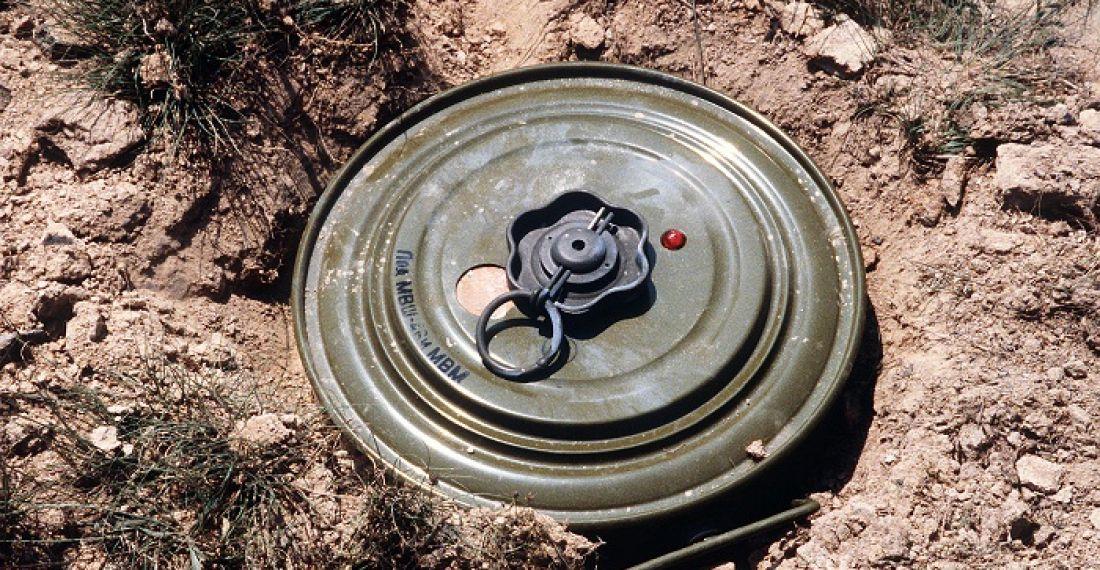
Landmine: Armenian Legacy Impacting Security In S Caucasus
The landmine problem created by Armenia in Azerbaijani territory is one of the bitter consequences of the long-standing conflict between the two countries. During and after the Garabagh conflict, Armenia significantly threatened regional security by planting landmines on Azerbaijani soil and failing to hand over accurate maps of mined areas to Baku. Notably, in February of this year, Yerevan handed over mine maps to Azerbaijan, which were later found to be inaccurate.
Mine Victims in Azerbaijan
The Azerbaijan National Agency for Mine Action (ANAMA) is actively conducting mine-clearing operations in Garabagh. During the mine-clearing operations in the Tartar, Aghdara, Kalbajar, Aghdam, Khojaly, Khankendi, Khojavand, Shusha, Lachin, Fuzuli, Gubadli, Jabrayil, and Zangilan districts, 280 anti-personnel and 87 anti-tank mines, as well as 8,086 unexploded ordnances (UXOs) were found and neutralized from July 29 to August 4.
However, the absence of precise mine maps significantly complicates and slows down these processes. At a press conference in April this year, ANAMA Chairman Vugar Suleymanov stated that the number of mine victims in Azerbaijan had reached 3,429. It is important to note that 595 people lost their lives in these incidents. Among the Azerbaijani mine victims, 357 are children and 38 are women.
The statistical figures announced in April continue to rise. For instance, yesterday, 102 anti-personnel mines were detected and neutralized in Lachin. However, it remains unknown where more mines might be found in the future. This is because Armenia refuses to provide accurate and correct mine maps to Azerbaijan, which is a key priority for regional peace.
Armenia Continues to Violate International Laws
It is no secret that Armenia has planted over a million mines in Azerbaijani territories. As a result, Azerbaijan is one of the most heavily mined countries in the world today. Yerevan's actions grossly violate the Geneva Conventions of August 12, 1949, the Second Protocol of October 10, 1980, the Convention on Certain Conventional Weapons, and the 1999 Ottawa Convention on the prohibition of anti-personnel mines.
Furthermore, according to international humanitarian law, parties to a conflict must ensure the safety of civilians. After the Second Garabagh War, Azerbaijan showed maximum humanitarian treatment to Armenian families who later settled in Garabagh, even offering them citizenship. Armenians who rejected the offer were safely transported to Armenia. However, Armenia still endangers civilian lives, making it difficult to restore peace in the region.
Why Are the Mine Maps Inaccurate?
The unprofessional actions and failures of the Armenian Army suggest that mines in Garabagh were not systematically planted, nor were mined areas documented. It is evident that the Armenian side planted mines unprofessionally and did not keep records. This is why Yerevan has struggled to provide the true version of the mine maps, ignoring Azerbaijan's demands. Another possibility is that Armenia deliberately avoids peace and wants the tension in the region to remain escalated.
It is no secret that, despite taking certain steps towards peace in the region, the Pashinyan administration can still provoke and obstruct peace talks with the slightest support from its backers. The representation of a U.S. envoy in the Armenian army and the allocation of 10 million euros by the EU to Yerevan were enough to disrupt peace in the region. Armenia's current avoidance of peace also delays the resolution of mine-related issues.
Lingering over reconstruction in Garabagh
The landmine problem seriously hinders ongoing reconstruction and development work in Garabagh. Furthermore, under the Azerbaijani government's "Great Return" program, it is planned to return citizens to Garabagh. However, the landmine threat slows this process, preventing citizens from safely returning to their homes. Solving the landmine problem is crucial for accelerating reconstruction work and ensuring the safety of citizens.
Resolving the landmine problem between Armenia and Azerbaijan is a crucial step for restoring peace and security in the South Caucasus. The international community must play an active role in this matter and compel Armenia to provide the mine maps.
Legal Disclaimer:
MENAFN provides the information “as is” without warranty of any kind. We do not accept any responsibility or liability for the accuracy, content, images, videos, licenses, completeness, legality, or reliability of the information contained in this article. If you have any complaints or copyright issues related to this article, kindly contact the provider above.






















Comments
No comment